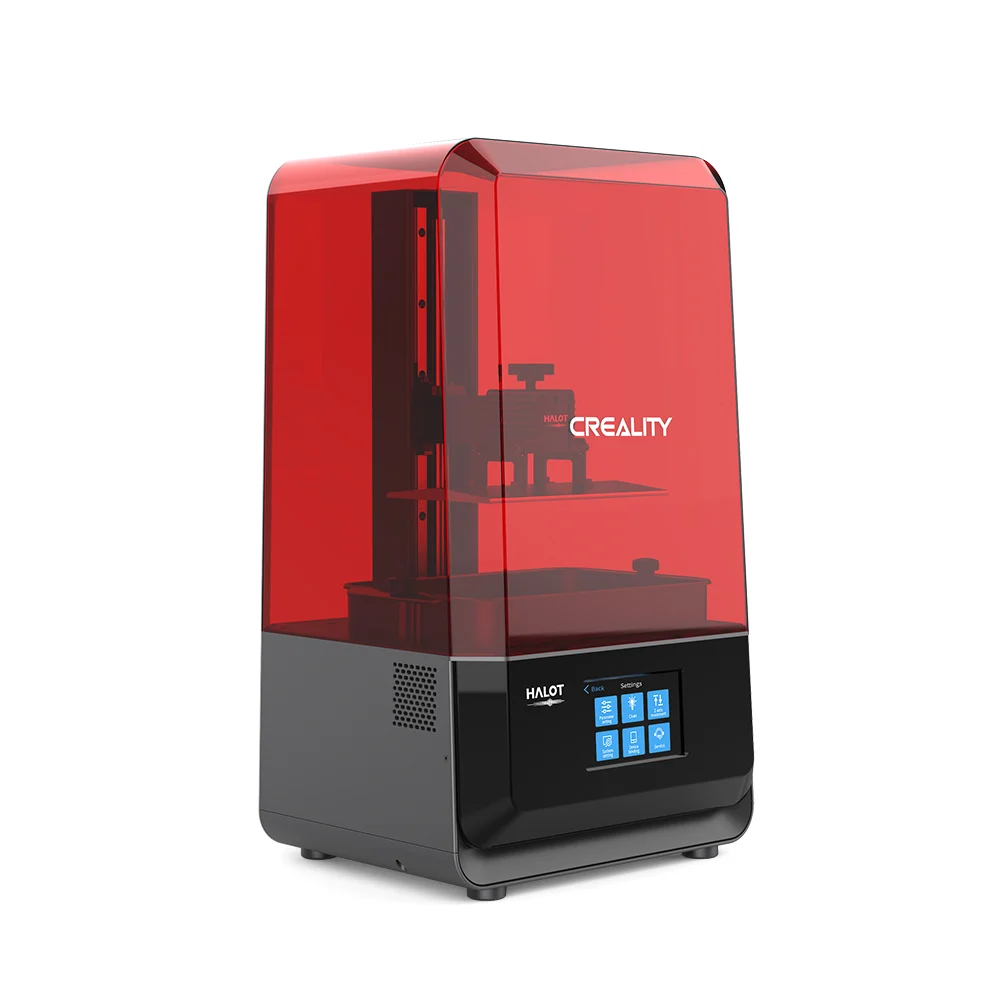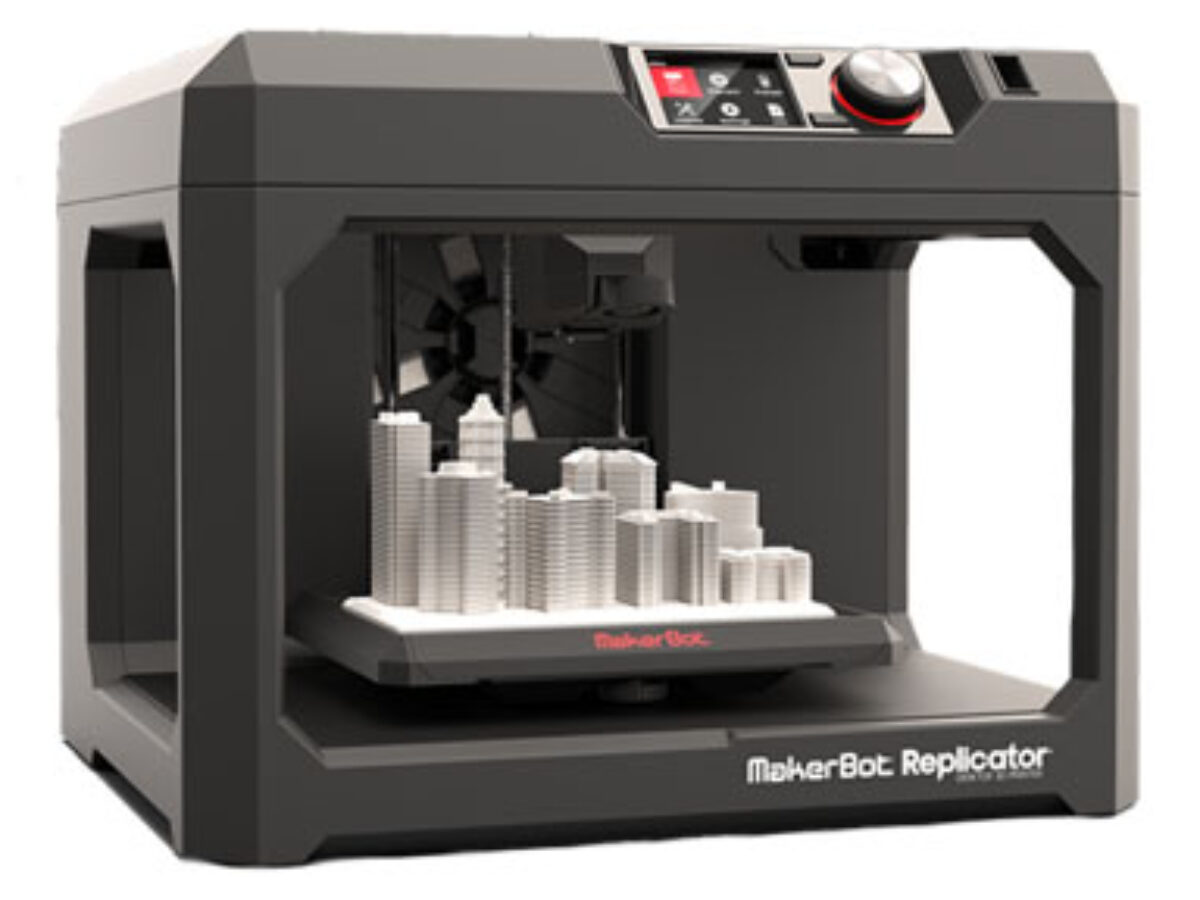Compare Halot Lite vs Replicator Plus
Comparison between the best 3D printers
Choose the best 3D printer at the best price. The cheapest 3D printers are here.
Buy a 3D printer here with 3D Fila.
 |
 |
|
| Model | Halot Lite |
Replicator Plus |
| Printing Material | Resin | Filament |
| Buy Resin for Creality 3D Halot Lite | Buy Filament forMakerbot Replicator Plus | |
| Estimated price | $400,00 | $2099,00 |
| Manufacturer | Creality 3D | Makerbot |
| Release Year | 2021 | 2016 |
| Print Volume [mm] | 192x120x200 | 165x295x195 |
| Printer Size [mm] | 330x301x572 | 410x528x441 |
| Weight [kg] | 10,6 | 18,3 |
| Power Loss Recovery | NO | YES |
| Maximum Resolution [mm] | 0,01 | 0,1 |
| Processor | ||
| Display | Display touchscreen 5'' | |
| Power Supply | 110/220V / 240W | |
| Connectivity | SD / USB | USB / Wi-Fi |
| Operating systems | Windows, Mac, Linux | Windows, Mac, Linux |
| Date of registration in the system | 2022-11-04 | 2022-11-15 |
| Release date | 2021 | 2016 |
| Extra features | Crealitys Halot Lite printer stands out in the mid-size resin 3D printing segment, with a build volume of 192 x 120 x 200 mm and 50 micron resolution. It offers a monochrome LCD for fast and durable printing, and an upgraded light source that ensures over 80% uniformity across the print bed. It includes Wi-Fi connectivity for remote control and updates, an ARM Cortex CPU for efficient performance, and is compatible with Halot Box and Lychee slicing software. It also has an activated carbon filter to reduce odors. | The Replicator Plus printer is easy to use and has very good print quality. Its software is user-friendly and powerful, with USB, Ethernet, Wi-Fi and support for printing via pen drive. With a safe design for an open frame printer, it is relatively quiet. The Smart Extruder+ detects filament end and pauses printing automatically, in addition to notifying via apps. It has a large print volume, with a non-heated and coated print bed for easy removal of parts. It also has a webcam for remote monitoring of prints. |
| Support for multiple colors and materials (AMS and CFS) | NO | NO |
Notes * |
||
| Cost-benefit | 8 / 10 | 6 / 10 |
| Hardware | 1.2 / 10 | 2.5 / 10 |
| Tela | . | . |
| Print volume | 3 / 10 | 3 / 10 |
| Performance | 9 / 10 | 1 / 10 |
Conclusion |
| In comparing the Creality 3D Halot Lite and the Makerbot Replicator Plus, several factors merit consideration, particularly regarding performance, price, features, and overall value for money. The Halot Lite, with a significantly lower price point, offers notable advantages in print resolution and performance, securing a score of 9 out of 10 in performance compared to the Replicator Plus’s mere 2 out of 10. This feature is crucial for users who prioritize detail and refinement in their prints. Additionally, the Halot Lite has a more modern build, having been released in 2021, whereas the Replicator Plus dates back to 2016, which could imply it lacks some of the latest technological advancements. Moreover, the Halot Lite provides a larger print volume and a monochrome LCD that enhances print speed and longevity. However, it lacks power loss recovery, which is a valuable feature offered by the Replicator Plus, signaling a potential concern for users who need reliability during long print jobs. The Replicator Plus compensates for its lower performance score with user-friendly software and a robust design, making it a solid choice for inexperienced users or those needing a hassle-free setup. Cost-effectiveness is clearly in favor of the Halot Lite, which receives a higher cost-benefit ratio relative to its performance capabilities despite its fewer extra features. The Replicator Plus, while featuring advanced connectivity and ease of use, is substantially more expensive and does not offer the same level of performance. In conclusion, for users seeking a 3D printer that maximizes performance relative to cost, the Creality 3D Halot Lite emerges as the better option, particularly for applications that demand high-resolution prints. However, those who value reliability and user-friendly features may still find the Replicator Plus to be a worthwhile investment despite its higher price and lower performance capacity. Therefore, the choice ultimately hinges on the user's specific needs and preferences regarding performance versus usability and reliability. |

